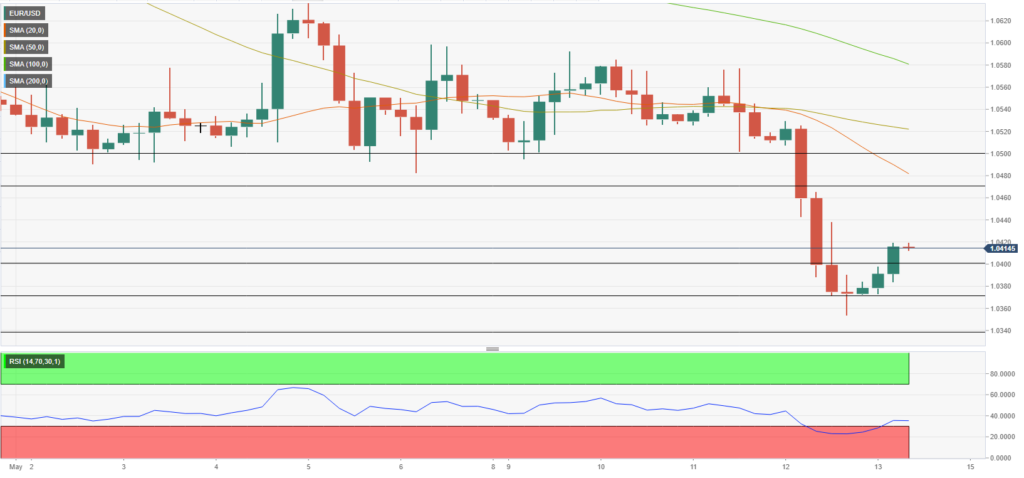EUR/USD has reversed its direction and climbed above 1.0400 following Thursday’s sharp drop. The pair remains at the mercy of the dollar’s market valuation and it could extend its correction in case risk flows dominate the markets ahead of the weekend.
The weakness witnessed in the greenback on Thursday remained short-lived and EUR/USD touched its weakest level since January 2017 at 1.0355. Although the data from the US showed that the pace of producer inflation eased a bit in April, FOMC Chairman Jerome Powell’s comments triggered another leg higher in the US Dollar Index during the American trading hours.
Powell told Marketplace radio that he was expecting the Fed to hike the policy rate by 50 basis points at each of the next two policy meetings but added that they were “prepared to do more” if the data were to turn the wrong way.
News of the city of Shanghai planning to ease coronavirus-related restrictions in mid-May helped the market mood improve early Friday and caused the dollar to lose its appeal. The Euro Stoxx 600 Index is up nearly 1% in the European morning and US stock index futures are up between 0.8% and 1.9%. If Wall Street’s main indexes open decisively higher and gather bullish momentum, EUR/USD could continue to erase its weekly losses.
The US economic docket will feature the University of Michigan’s preliminary consumer confidence survey for May. Investors expect the headline Consumer Sentiment Index to edge lower to 64 from 65.2 in April. Unless this data misses the market expectation by a wide margin, it is unlikely to have a significant impact on risk perception.
EUR/USD Technical Analysis

On the other hand, a four-hour close below 1.0400 (psychological level) could be seen as a bearish development and open the door for additional losses toward 1.0370 (static level) and 1.0340 (January 3, 2017, low).
